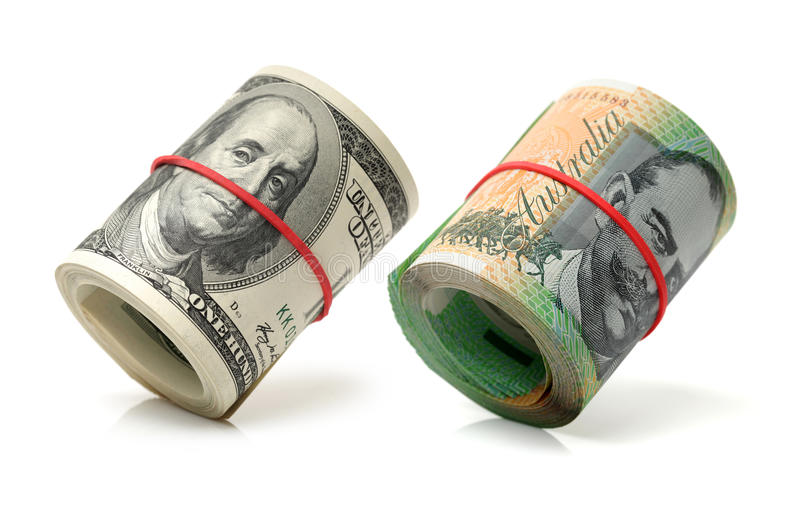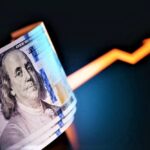RBA Delivers Expected Rate Cut Amid Inflation Management Concerns.
Australian Dollar (AUD) dipped against the US Dollar (USD), reflecting investor concerns about the broader policy outlook and domestic political instability. The Reserve Bank of Australia (RBA) announced a widely anticipated 25 basis point interest rate cut at its May policy meeting, bringing the Official Cash Rate (OCR) down from 4.10% to 3.85%. While the decision had been broadly price into the market.
RBA Governor Michele Bullock described the move as a proactive step aimed at supporting economic momentum while still keeping inflation on a downward trajectory. In her press conference, Bullock emphasized that the rate cut was not a signal of a new easing cycle, but rather a data-dependent measure tailored to evolving economic conditions. She left the door open for further policy adjustments if inflation remains sticky or if labor market strength falters.
Australian Political Turmoil Adds to Australian Dollar Market Uncertainty
The Aussie Dollar’s decline was also exacerbated by escalating political instability at home. The National Party’s surprise withdrawal from the Opposition coalition with the Liberal Party fractured the conservative front, while the ruling Labor Party swiftly capitalized on the chaos to consolidate power. The shift in political dynamics has created policy uncertainty and weakened investor sentiment toward Australian assets, including the AUD.
The resulting volatility highlights how non-monetary factors—such as political instability—can magnify currency movements, even in the context of expected central bank decisions. Market participants are now watching closely to see whether the Labor government will adopt expansionary fiscal policies that could influence the RBA’s next steps.
China Cuts Rates, Adding Indirect Pressure on the Australian Dollar
Adding to the AUD’s challenges was the People’s Bank of China’s (PBoC) decision to cut both its one-year and five-year Loan Prime Rates (LPRs) by 10 basis points. The one-year LPR now stands at 3.00%, while the five-year LPR is at 3.50%. These moves were aimed at bolstering weak credit demand and stimulating domestic investment in the face of disappointing consumer data.
As China is Australia’s largest trading partner, any monetary policy shift in Beijing tends to ripple through Australian markets. A lower LPR generally signals slowing growth in China, which could dampen demand for Australian exports such as iron ore and coal—further weakening the AUD.
AUD/USD Reacts to US Dollar Weakness, But Momentum Stalls
Interestingly, the AUD had gained over 0.50% in the previous session on the back of US Dollar weakness, triggered by Moody’s downgrade of the US credit rating from Aaa to Aa1. The downgrade puts Moody’s in line with Fitch (2023) and S&P (2011), both of which had already removed the US from their top-tier rating.
Moody’s cited growing fiscal imbalances, a deteriorating debt-to-GDP ratio (projected to hit 134% by 2035), and ballooning debt-servicing costs as primary reasons for the downgrade. The budget deficit is expected to expand to 9% of GDP, driven by entitlement program expansions and reduced tax revenues.
While the US Dollar Index (DXY) has remained subdued near 100.40, the AUD/USD pair failed to capitalize significantly on greenback weakness. This highlights how domestic and regional factors are weighing more heavily on the AUD than external ones at the moment.
US Inflation Softens, Fueling Fed Rate Cut Expectations
Adding to the downward pressure on the USD are recent inflation readings, which showed signs of cooling. Both the Consumer Price Index (CPI) and Producer Price Index (PPI) for April pointed to easing price pressures. As a result, expectations are rising that the Federal Reserve could deliver additional rate cuts before the end of 2025.
This dovish tilt is also reflected in weakening US Retail Sales data, which missed expectations and suggested waning consumer demand. While these factors have taken some shine off the USD, they haven’t been enough to sustain AUD gains, largely due to Australia’s domestic headwinds.
US-China Trade Dynamics Shift Again Under Trump
Former President Donald Trump, now once again in the Oval Office, has reignited trade talks with China. In a recent interview with Fox News, Trump claimed the US-China relationship is “excellent” and hinted at negotiating directly with President Xi Jinping to establish a more favorable trade deal.
However, Trump also signaled his intent to add several Chinese semiconductor firms to the export blacklist, a move that threatens to derail the fragile trade truce. The Financial Times reported that US officials worry that renewed sanctions could undermine the Geneva trade agreement reached just weeks ago.
This push-pull dynamic creates a complex environment for the Australian Dollar. On one hand, a successful trade détente would benefit Australia via increased Chinese demand. On the other, trade hostilities could disrupt global supply chains, depressing commodity demand and weakening the AUD.
Chinese Economic Data Mixed, Raising Fresh Concerns
The latest data from the National Bureau of Statistics (NBS) showed that China’s Retail Sales rose by 5.1% year-over-year in April, slightly below the 5.5% forecast and down from 5.9% in March. Meanwhile, Industrial Production grew 6.1% YoY, beating the 5.5% estimate but slowing from March’s 7.7% pace.
These mixed signals have created uncertainty around China’s economic trajectory. For Australia, that spells trouble, as the demand outlook for its key exports remains clouded. With the PBoC now in easing mode, markets are left wondering whether additional stimulus will be sufficient to reignite Chinese growth.
Strong Australian Jobs Data Offers Some Support to Australian Dollar
Despite broader weakness, Australia’s labor market continues to show resilience. The Australian Bureau of Statistics (ABS) reported an 89,000 job increase in April—well above the forecasted 20,000 and more than double March’s 36,400 gain. The unemployment rate held steady at 4.1%.
This robust labor market print offered a temporary lifeline to the AUD, as it suggested that economic activity remains firm even as the RBA begins easing. However, this also puts the central bank in a tricky position: cutting rates while the labor market is hot could risk re-igniting inflationary pressures.
Wage Growth Rebounds, Raising Questions About Future Cuts
Wage growth also showed signs of picking up. The ABS Wage Price Index rose 3.4% year-over-year in Q1 2025, above the market forecast of 3.2% and up from the 3.2% increase recorded in Q1 202







